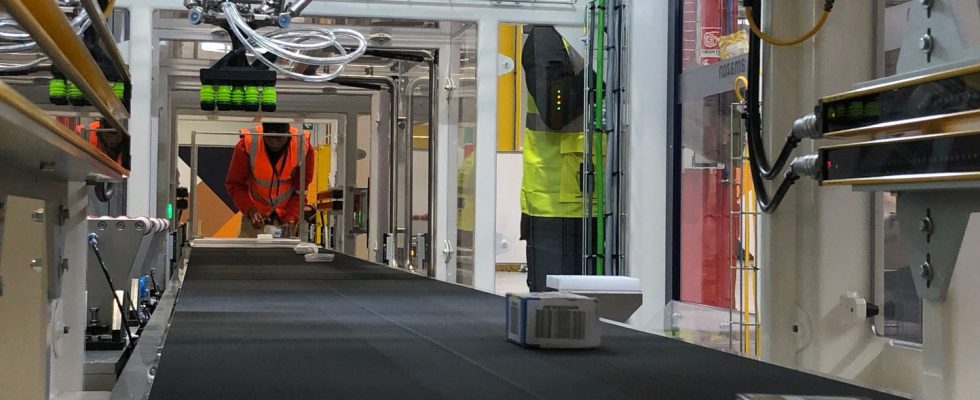From our special correspondent in Milan
In the distance, the still snow-capped peaks of the Alps stand out masterfully, harmoniously breaking the horizon line. Around it, rice fields still asleep stretch out as far as the eye can see. It is there, in Vercelli, in the heart of the Piedmont region, that the walls of a gigantic Amazon warehouse stand. A place which houses one of the three “Innovation Labs” of the delivery giant, the only one established in Europe.
Since 2017, 200 engineers have worked in this technology center, secretly working on the design of robots that will be integrated into the company’s logistics sites. And for the first time, the American group opened the doors of its lab to journalists.
400 million products delivered every day
“Over the last five years, 700 million euros have been invested in innovation in Europe,” immediately emphasizes Stefano Peregro, one of Amazon’s vice-presidents. The challenge is high: “accelerate delivery cycles” while preserving the environment and avoiding waste. Because more than 400 million products are shipped daily to the four corners of the planet. Suffice to say that when it comes to cardboard, it weighs millions of tons.
“Today, 50% of packages delivered in Europe are wrapped in reduced and recyclable packaging or are even delivered without packaging,” assures Patrick Lindner, the “big boss” responsible for leading the mechatronics and eco-responsible packaging section within Amazon. The stated objective: to do even better. Hence the use of machines, starting with the “URL”, the latest star of the lab.
The “robotic labeler” is capable of adapting the size of the labels according to the packages presented to it, particularly those which “do not have normal shapes”. An essential role in the production chain. Just like that of “automated packaging technology”, a gigantic machine that creates “durable and flexible” tailor-made paper bags. Very practical for the pair of socks that comes her way. And presto, a little tap on the button and the product is packed in a few seconds.
Work accidents down 60%
“With this system, the bags used are up to 90% lighter than cardboard boxes of the same size,” says Patrick Lindner. This represents an average of 26 grams less per delivery. If you add up everything that is shipped during the day, it adds up to a very significant weight.”
A little further on, the “item sorter” is at work. Its mission: to identify the products that have just been sent to it and distribute them intelligently in one of the 40 bins placed at its feet. His friend, the “bin collector”, is waiting to take over. This shuttle robot, which moves on a rail, receives a notification as soon as the bin is full. Using its pincer-shaped arm, it collects it then replaces it with an empty bin, without ever interrupting the process. Now comes the “automated guided cart”, a small blue robot with a flat, oval shape, which slides under the pile of empty boxes to automatically transport them to the distribution centers.
“All these innovations make the work of our employees easier but do not replace their jobs,” defends Sarah Rhoads, vice-president in charge of occupational safety and health. According to Amazon executives, robotics has already created more than 220,000 jobs in Europe over the past fifteen years. But above all, the machines would have helped to reduce workplace accidents by 60% between 2019 and 2023. “Many injuries are caused by repetition of actions and physical effort. This is clearly an improvement in working conditions,” concludes Sarah Rhoads, thus putting an end to accusations of pressure on employees.

